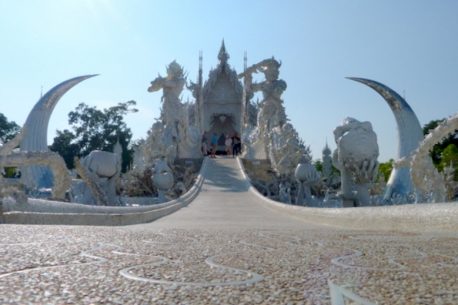
Autism is a much studied disorder but still very little known: experts and doctors, for example, do not yet know what causes it. The first question to ask is "what is autism?" In fact, it is often incorrectly defined as a disease; however, autism is not a disease, as a disease presupposes a diagnosis and a cure. Autism, on the other hand, cannot be cured. Autism is a syndrome, indeed, the more correct term to use would be "autism spectrum syndrome", as this syndrome affects every aspect of a person's being. There is no single form of autism, but there are actually infinite combinations of this syndrome: in practice, this means that every child with autism is unique, which is why it is often difficult to make a certain diagnosis. On the web, doing some research I notice that the phrase "and their world" is repeated; So I ask myself a question, those who suffer from autism, a syndrome that affects about 100,000 Italian children and adolescents (one child in 100, with a frequency 4 times higher among males) – live in a world of their own, without really perceiving the solitude? Adelia Lucattini, psychiatrist and ordinary psychoanalyst of the Italian Psychoanalytic Society in an interview says: "Autistics have a great difficulty in communicating, but they are not isolated. They live in a stereotyped and repetitive world because this consoles and relaxes them. They also often have a sensory hypersensitivity, a susceptibility to sounds, noises, tactile sensations, so they tend to protect themselves through isolation. Not because they like being alone ". As a child I had a friend with autism and the thing that has stuck in my mind is that she easily perceived elements that a non-autistic person tends to escape (details of a painting, details of a room). Conversely, they do not seem to grasp aspects of reality that are immediately evident to others, such as the intentions, emotions, beliefs and desires of others. Valeria Manera, a young researcher at the University of Turin who today works at the psychophysiology laboratory of Stanford University, studies in children with autism precisely the deficits in predicting the intentions of others explains: What happens at the brain level? In the last 15 years a lot of progress has been made, for example we know that in our brain there is an area that is activated when we look at faces (the fusiform face area). It has been found that when a person with autism looks at a face, this area does not activate in his brain. What these kinds of studies show is that abnormalities in these people's behavior are associated with abnormalities in the activation of their brains. In pioneering studies, functional magnetic resonance is also used to evaluate the effect of rehabilitation: for a rehabilitation to be truly effective and lasting, it is not enough that it has modified behavior, it must also have had an effect on brain activations. Autism is an unknown world, made up of images, ruptures, sometimes misunderstanding and a lack of patience. Click here to discover all our travel proposals for the disabled and accessible !! Diversity is not a bad thing, but a way for everyone to get rich and get to know each other: the important thing is to try to understand each other and find the right key to understand each other, despite the many difficulties. I conclude with one of the quotes I love most from Fulvio Ervas' book – if I hug you, don't be afraid: “You know what? Scientists claim that we are all different and instead we are increasingly homologating. At this rate, the only islands of diversity will remain people like his son. ”I guess that's a compliment, I say. "I meant that a great symphony contains many shades."

Duration: 24 days / 23 nights
from € 4,473 - Voli inclusi

Beach holidays for the disabled Sea , emotion and nature are elements that form the backdrop to the unique experience of diving. The diver, in fact, especially when experienced, ends up creating a very close and intense bond with the marine world, learning to love its beauties, but also to know the currents and the […]

My journey starts from Chiang Mai towards Chiang Rai, and just 15 km from the latter is the wonderful and extravagant Wat Rong Khun, better known as the "White Temple". The stop here is a must … Like other wonders around the world, this temple too has the ability to leave its visitors speechless! Click […]